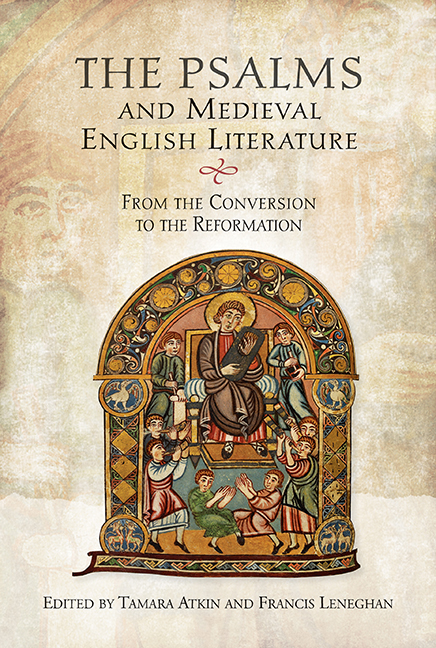55 results
Growth performance and feed utilisation of Australian hybrid abalone (Haliotis rubra × Haliotis laevigata) fed increasing dietary protein levels at three water temperatures
-
- Journal:
- British Journal of Nutrition / Volume 131 / Issue 6 / 28 March 2024
- Published online by Cambridge University Press:
- 03 November 2023, pp. 944-955
- Print publication:
- 28 March 2024
-
- Article
-
- You have access
- Open access
- HTML
- Export citation
Characterisation of age and polarity at onset in bipolar disorder
-
- Journal:
- The British Journal of Psychiatry / Volume 219 / Issue 6 / December 2021
- Published online by Cambridge University Press:
- 25 August 2021, pp. 659-669
- Print publication:
- December 2021
-
- Article
-
- You have access
- Open access
- HTML
- Export citation
Effects of dietary choline on liver lipid composition, liver histology and plasma biochemistry of juvenile yellowtail kingfish (Seriola lalandi)
-
- Journal:
- British Journal of Nutrition / Volume 125 / Issue 12 / 28 June 2021
- Published online by Cambridge University Press:
- 18 September 2020, pp. 1344-1358
- Print publication:
- 28 June 2021
-
- Article
-
- You have access
- HTML
- Export citation
Comparison of outcomes following thoracoscopic versus thoracotomy closure for persistent patent ductus arteriosus
-
- Journal:
- Cardiology in the Young / Volume 30 / Issue 10 / October 2020
- Published online by Cambridge University Press:
- 05 August 2020, pp. 1433-1438
-
- Article
- Export citation
Yogurt consumption and colorectal polyps
-
- Journal:
- British Journal of Nutrition / Volume 124 / Issue 1 / 14 July 2020
- Published online by Cambridge University Press:
- 20 February 2020, pp. 80-91
- Print publication:
- 14 July 2020
-
- Article
-
- You have access
- HTML
- Export citation
Hospitalisation and length of hospital stay following first-episode psychosis: systematic review and meta-analysis of longitudinal studies
-
- Journal:
- Psychological Medicine / Volume 50 / Issue 6 / April 2020
- Published online by Cambridge University Press:
- 06 May 2019, pp. 991-1001
-
- Article
- Export citation
Endogenous biosynthesis of n-3 long-chain PUFA in Atlantic salmon
-
- Journal:
- British Journal of Nutrition / Volume 121 / Issue 10 / 28 May 2019
- Published online by Cambridge University Press:
- 05 March 2019, pp. 1108-1123
- Print publication:
- 28 May 2019
-
- Article
-
- You have access
- HTML
- Export citation
Contents
-
- Book:
- The Psalms and Medieval English Literature
- Published by:
- Boydell & Brewer
- Published online:
- 09 May 2017
- Print publication:
- 17 March 2017, pp v-vi
-
- Chapter
- Export citation
Contributors
-
- Book:
- The Psalms and Medieval English Literature
- Published by:
- Boydell & Brewer
- Published online:
- 09 May 2017
- Print publication:
- 17 March 2017, pp ix-xi
-
- Chapter
- Export citation
Index
-
- Book:
- The Psalms and Medieval English Literature
- Published by:
- Boydell & Brewer
- Published online:
- 09 May 2017
- Print publication:
- 17 March 2017, pp 336-344
-
- Chapter
- Export citation
I - Translation
-
- Book:
- The Psalms and Medieval English Literature
- Published by:
- Boydell & Brewer
- Published online:
- 09 May 2017
- Print publication:
- 17 March 2017, pp 35-36
-
- Chapter
- Export citation
Figures
-
- Book:
- The Psalms and Medieval English Literature
- Published by:
- Boydell & Brewer
- Published online:
- 09 May 2017
- Print publication:
- 17 March 2017, pp vii-viii
-
- Chapter
- Export citation
Frontmatter
-
- Book:
- The Psalms and Medieval English Literature
- Published by:
- Boydell & Brewer
- Published online:
- 09 May 2017
- Print publication:
- 17 March 2017, pp i-iv
-
- Chapter
- Export citation
Preface
-
- Book:
- The Psalms and Medieval English Literature
- Published by:
- Boydell & Brewer
- Published online:
- 09 May 2017
- Print publication:
- 17 March 2017, pp xii-xiii
-
- Chapter
- Export citation
II - Adaptation
-
- Book:
- The Psalms and Medieval English Literature
- Published by:
- Boydell & Brewer
- Published online:
- 09 May 2017
- Print publication:
- 17 March 2017, pp 171-172
-
- Chapter
- Export citation
Abbreviations
-
- Book:
- The Psalms and Medieval English Literature
- Published by:
- Boydell & Brewer
- Published online:
- 09 May 2017
- Print publication:
- 17 March 2017, pp xv-xvi
-
- Chapter
- Export citation
III - Voice
-
- Book:
- The Psalms and Medieval English Literature
- Published by:
- Boydell & Brewer
- Published online:
- 09 May 2017
- Print publication:
- 17 March 2017, pp 253-254
-
- Chapter
- Export citation

The Psalms and Medieval English Literature
- From the Conversion to the Reformation
-
- Published by:
- Boydell & Brewer
- Published online:
- 09 May 2017
- Print publication:
- 17 March 2017
Acknowledgements
-
- Book:
- The Psalms and Medieval English Literature
- Published by:
- Boydell & Brewer
- Published online:
- 09 May 2017
- Print publication:
- 17 March 2017, pp xiv-xiv
-
- Chapter
- Export citation
Miscellaneous Frontmatter
-
- Book:
- The Psalms and Medieval English Literature
- Published by:
- Boydell & Brewer
- Published online:
- 09 May 2017
- Print publication:
- 17 March 2017, pp xvii-xviii
-
- Chapter
- Export citation



